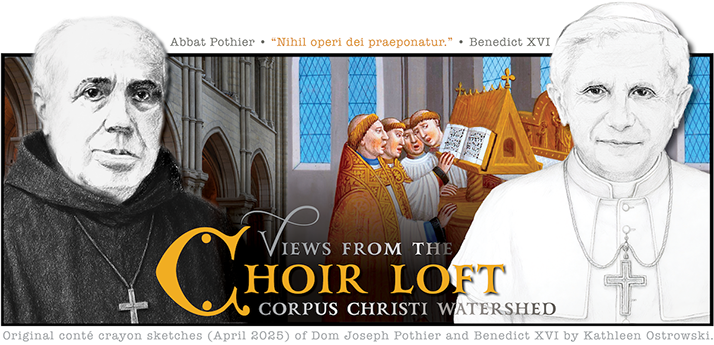
 FEW WEEKS AGO ONE OF OUR PRIESTS gave a homily on sacred language. In it, he said the following:
FEW WEEKS AGO ONE OF OUR PRIESTS gave a homily on sacred language. In it, he said the following:
“The Church has its own language and its own culture. The culture of the Church is about being a ‘native speaker.’ Are you a part of this culture or just a visitor?” Later, he went on to say, “What is this language? It is the language of Jesus Christ.” This got me thinking.
Liturgiam Authenticam (2001) is the Fifth Instruction for the “Right Application of the Constitution on the Sacred Liturgy” of the Second Vatican Council. It provides, as part of Pope John Paul II’s focus on liturgical renewal, a formulation of the principles by which vernacular translations of the texts of the Roman liturgy are to be created. One of its abiding principles is that liturgical language is a sacred language different than ordinary speech. It is unique and proper to divine worship.
Consequently it should cause no surprise that such language differs somewhat from ordinary speech. Liturgical translation…will facilitate the development of a sacral vernacular, characterized by a vocabulary, syntax and grammar that are proper to divine worship…
(Liturgiam Authenticam §47).
And on choosing the kind of vocabulary to be used:
…words that lack such a sacral character are not to be used instead;
(Liturgiam Authenticam §50.c)
Although this document refers to the kind of vernacular translations to be promulgated in liturgical books, a sacral language can be fostered and developed within our choirs in the area of choral diction. If the language of our Catholic culture is truly sacred, then it behooves us, choristers and conductors alike, to develop our singing diction in a manner that is set apart, exalted, and special. This should become our native language.
It is not an approach that merely makes the text clear or intelligible. It’s more than a good ‘t’ at the end of a word, or a clear starting ‘gl’ at the beginning of the Gloria. It means heightening the formulation of vowels and consonants and moving these away from every day pronunciation. A pet-peeve of mine is the American pronunciation of ‘R’. In both Latin and English pronunciation I insist on a flipped or even rolled ‘R’. (Only in purely “American” styles, such as a folk song, do we dispense with the flipped ‘R’). Over aspirated consonants such as [s] or [t] are not attractive and sound uncared for. Specific attention to the matching of pure vowels, without the intrusion of regional diphthongs, is crucial to achieving a sacral choral language. Conductors should never give up trying to create beautiful sounds with the five basic Latin vowels. A great choral sound can be built on the foundation of a pure and united [u] (“oo”) vowel, and much harm can come when the [Ɛ] vowel (such as in the final syllable of Kyrie) is allowed to sound like [Ɛ:I:i] (“ay-ee”). An overly bright ‘E’ vowel [i] is usually an unwelcome sound. If the regional dialects of our singers are left unchecked, more than a poor choral ‘blend’ will be the result. The language of everyday speech becomes the norm, and the exalted, special, and sacral language of Jesus Christ is lost.
Many untrained singers balk at this approach. They may not hear the difference, or may think it’s a lot of extra work, or may not understand why it’s so important. Vigilance is the key. Not only will this attention to unity of sound produce a healthier and more beautiful result, but as in everything that we do to prepare for the liturgy, only our very best will suffice. We should be native speakers of a sacral and beautiful language that is “…worthy of the mysteries being celebrated.” (Apostolic Letter of John Paul II,Vicesimus Quintus Annus, 20; 1988).

